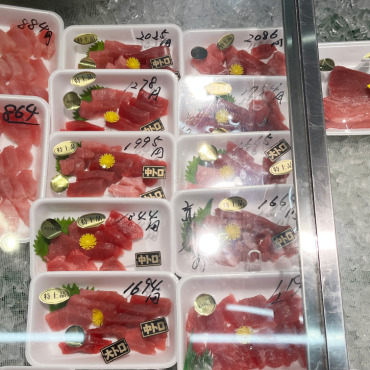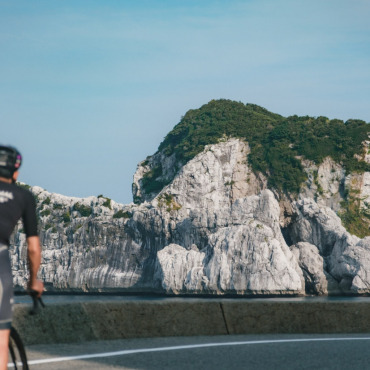
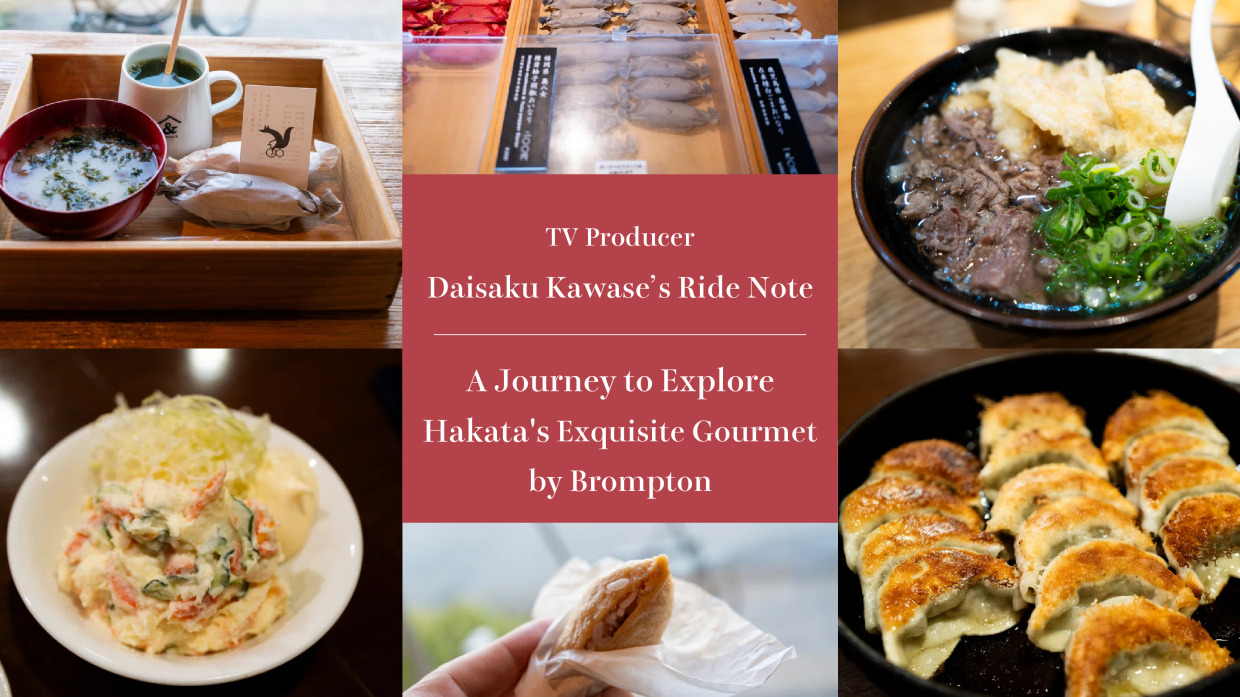
TV Producer Daisaku Kawase’s Ride Note
A Journey to Explore Hakata’s Exquisite Gourmet by Brompton
Table of Contents
1. My Dream Bike, the Brompton
2. Surprisingly Easy and Safe Bike transport Experience
3. Finally Touring Hakata with the Brompton
4. Isono-kun on “Sazae-san Street”
5. Bicycle-Friendly Fukuoka
6. To Hakata’s Famous Shop “Udon Taira”
7. Travel Rides are the Best!
1. My Dream Bike, the Brompton
I’ve recently discovered the joy of travel rides.
Riding a road bike through vast nature is thrilling. However, exploring a city at your travel destination brings a different kind of pleasure. Admiring famous architecture, taking a break at a café, and visiting parks and shops are all enjoyable activities.
Road bikes with large wheels aren’t suitable for city riding. A small-wheeled bike that allows for easy stop-and-go is better. Moreover, for travel rides, a bike that is easy to transport is ideal.
And so… I bought one of those.
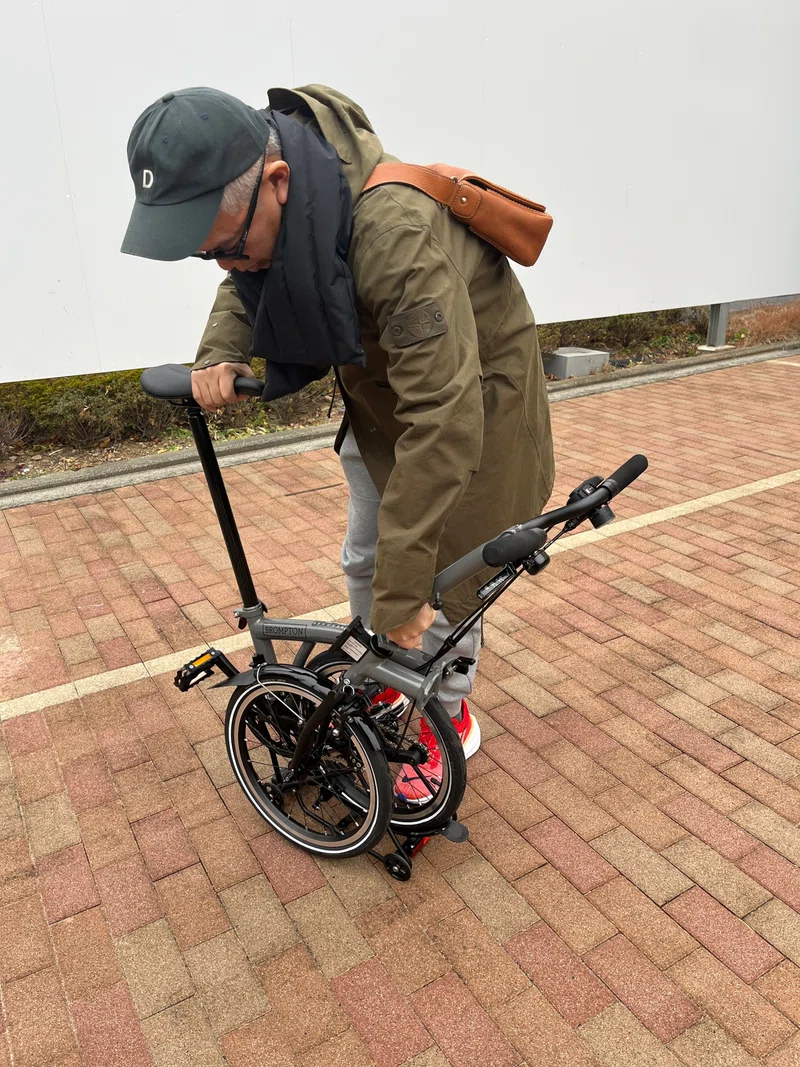
https://us.brompton.com/
It’s a Brompton.
Once you get used to folding it, it takes just 10 seconds. Unfolding it is just as easy, taking only 10 seconds as well. When folded, it becomes as compact as a small suitcase, roughly 60cm x 60cm x 30cm. If you’re worried about parking it, you can bring it into a store without much fuss. Plus, mine is the P Line with a 4-speed gear. It can go pretty fast.
In other words, it’s unbeatable for city riding.
As soon as I bought it, I had one thought: I want to go on a travel ride with the Brompton. Even in familiar places, I should be able to see new sights with a Brompton. The first place I chose was Hakata.
I wanted to try bike transport by plane and enjoy a gourmet tour. The city’s size is just right, and a short ride can take you to the sea. And so, I headed to Hakata.
2. Surprisingly Easy and Safe Bike transport Experience
For road bike enthusiasts, bike transport is considered an eternal challenge, akin to the Riemann Hypothesis or Fermat’s Last Theorem. Removing the wheels and placing the bike in a transport bag is quite a hassle, and many people worry about whether their bike will be safely transported in a flimsy bike bag.
Brompton, however, easily overcomes this challenge.
I Googled tips for transporting a Brompton by plane in advance. I found out that if you ask at the check-in counter, they can provide a case that perfectly fits the Brompton.
This flight was with JAL.
“Excuse me, this is a bicycle. Could you put it in a case for me?”
When I asked at the check-in counter, the staff smiled and provided a plastic case. It fit perfectly. However, there was a bit of space, causing the bike to wobble, so they added bubble wrap to keep it secure. This was reassuring. There was no risk of it tipping over or having something heavy placed on top of it.
Additionally, I used the declared value charge system this time.
This is like insurance for items exceeding 150,000 yen in value. It costs 10 yen for each 10,000 yen over 150,000 yen. For example, for a bicycle worth 300,000 yen, you pay 150 yen (300,000 – 150,000 = 150,000 yen).
This way, you can expect it to be handled with extra care.
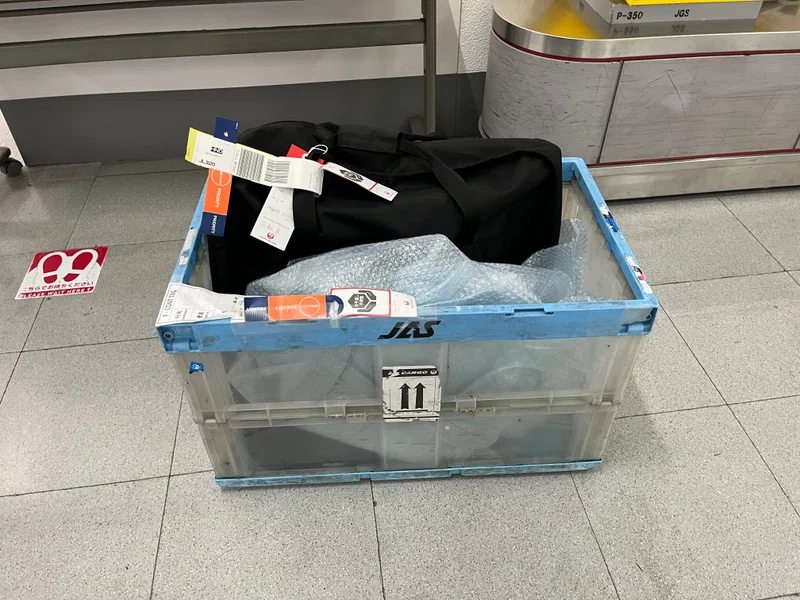
https://ontrip.jal.co.jp/chugoku-shikoku/17427923
With an unusual sense of reassurance, I arrived at Fukuoka Airport. From there, I would be traveling to the hotel by subway. Even if you compact a road bike as much as possible, it can be challenging to maneuver in a slightly crowded carriage. However, this time, it fit snugly into the space next to the door.
Brompton bike transport was truly easy this time.
By the way, this bike transport bag has handles on the sides, allowing you to effortlessly lift it by grabbing onto those handles over your shoulder. This kind of dedicated gear is another charm of the Brompton.
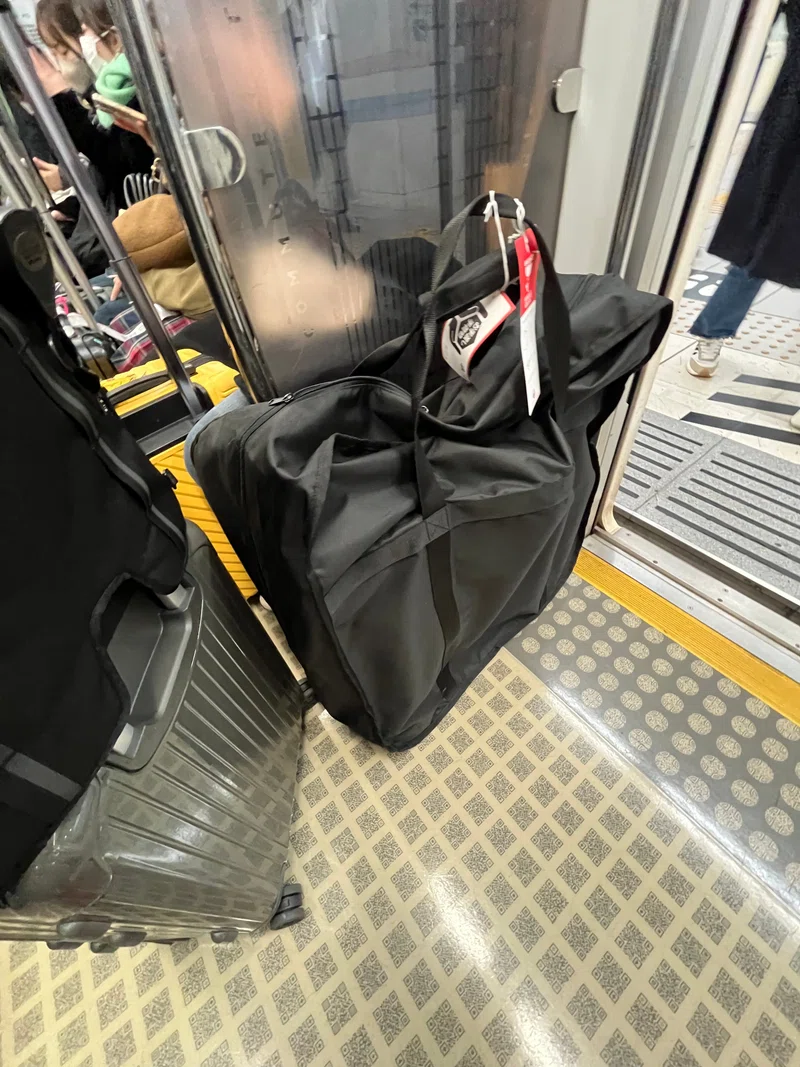
So, I left my luggage at the hotel and headed out to celebrate my first Brompton bike transport by venturing into the bustling downtown area. I wanted to raise a toast, so I walked to my destination. One of the must-try specialties in Hakata was on my radar: iron pot dumplings. I had already spotted a place to eat beforehand: “Tetsu-nabe Nakasu Honten.”
I enjoyed piping hot dumplings dipped in their special sauce and yuzu pepper. As I bit into the crispy skin, the juicy filling spread throughout my mouth. Their signature potato salad was also delicious, with a generous portion that was incredibly tasty.
Thanks to my first Brompton bike transport and the amazing dumplings, I went to bed that night feeling completely satisfied.
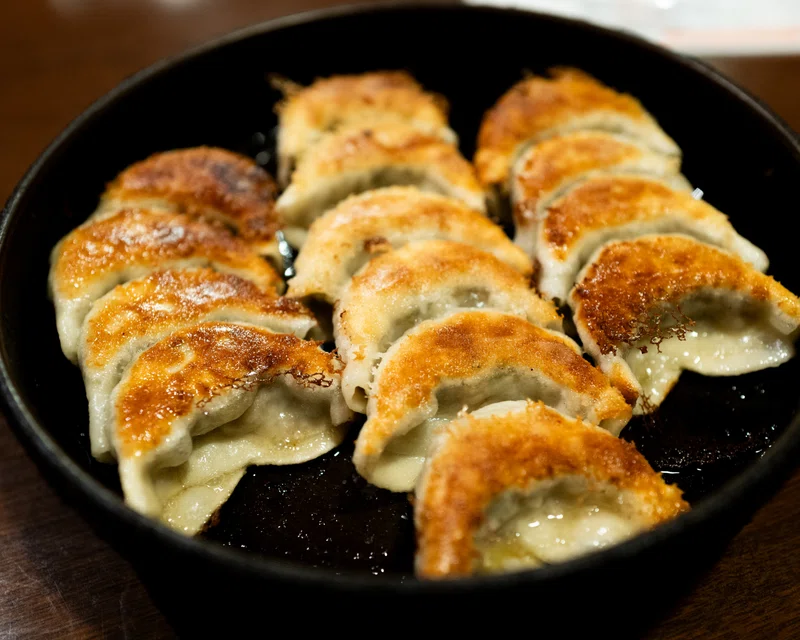
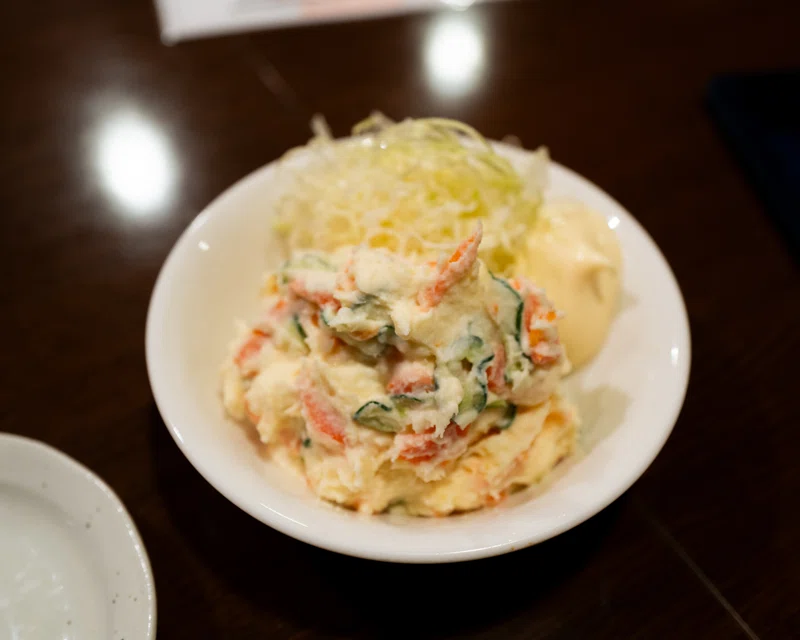
3. Finally Touring Hakata with the Brompton
In the morning, I used Strava to map out a route of about 30 kilometers in advance. It’s a Hakata enjoyment ride with famous spots and gourmet food.
I left the hotel just before 9 a.m. This time, the course started from Nakasu. my first destination was Ohori Park. I planned to have breakfast there. Breakfast is one of the joys of a travel ride. While hotel breakfasts are fine, going out on a bike to have breakfast in the city is something special.
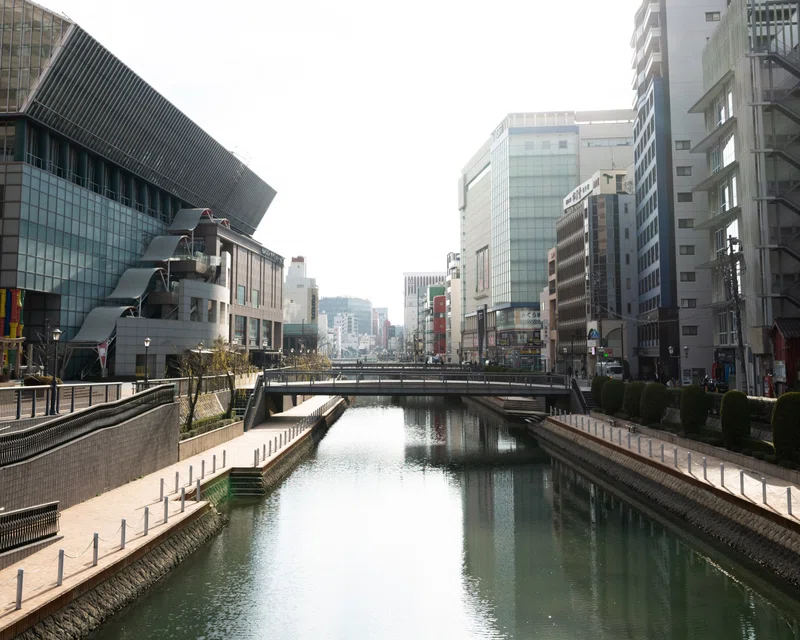
Ohori Park, as its name suggests, was once part of the moat surrounding Fukuoka Castle. As a remnant of its past, the park features a vast pond, with the surrounding area developed into a park. There’s the Fukuoka City Art Museum, swan boats, and running tracks. By the way, the Fukuoka City Art Museum was designed by architect Kunio Maekawa. It’s a beautifully spacious architectural marvel with a sleek exterior. Admission is free, so I highly recommend stopping by the café for a coffee.
Amidst the hustle and bustle of the city waking up in the morning, Ohori Park offers a tranquil escape where time seems to slow down.
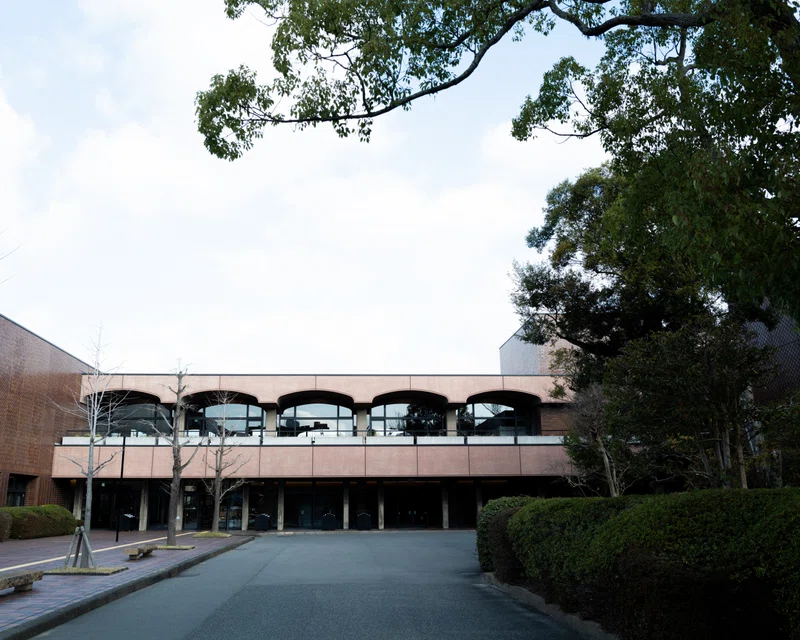

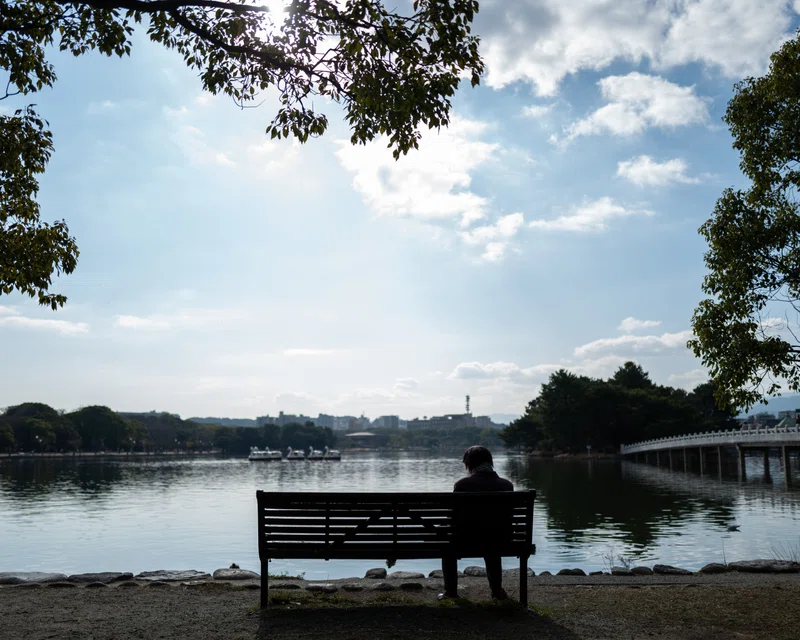
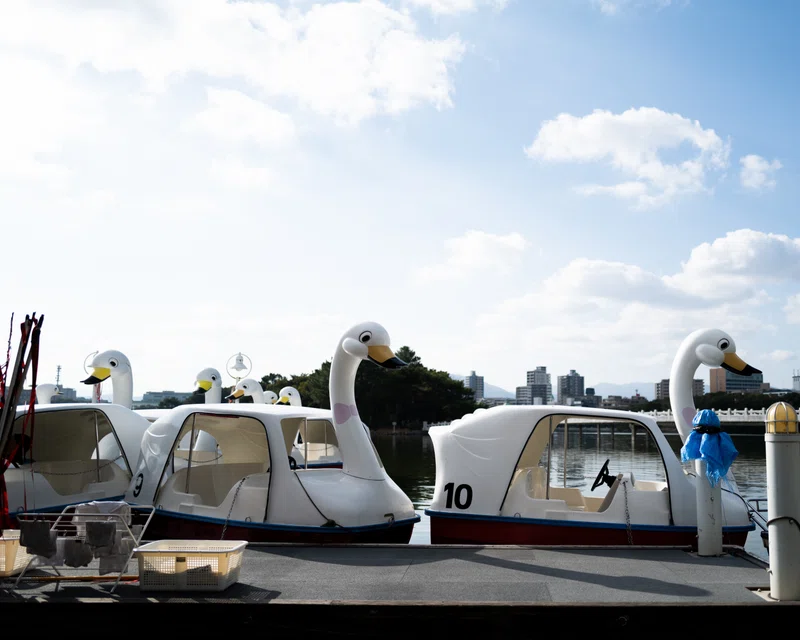
For breakfast, I chose a local restaurant called “& Locals,” which prides itself on using local ingredients. The spacious interior, with large windows facing the pond, features local products such as rice, miso, and tea for sale. There’s also an eat-in space where you can enjoy a variety of inari sushi (flavored boiled rice wrapped in fried bean curd).
This time, I chose the “Traveling Inari Set.”
You can choose two pieces of inari sushi, and it comes with Yame tea.
I chose the “Fukuoka Prefecture – Okuyame Shitake Yuzu Pepper Inari” and the “Kagoshima Prefecture – Kikaijima Indigenous White Sesame Inari.” Both have a comforting taste made with care. Plus, in the morning, you get complimentary miso soup with seaweed.
It gets quite crowded during lunchtime, but it’s relatively empty right after opening at 9 a.m. Early birds catch the worm, as they say.
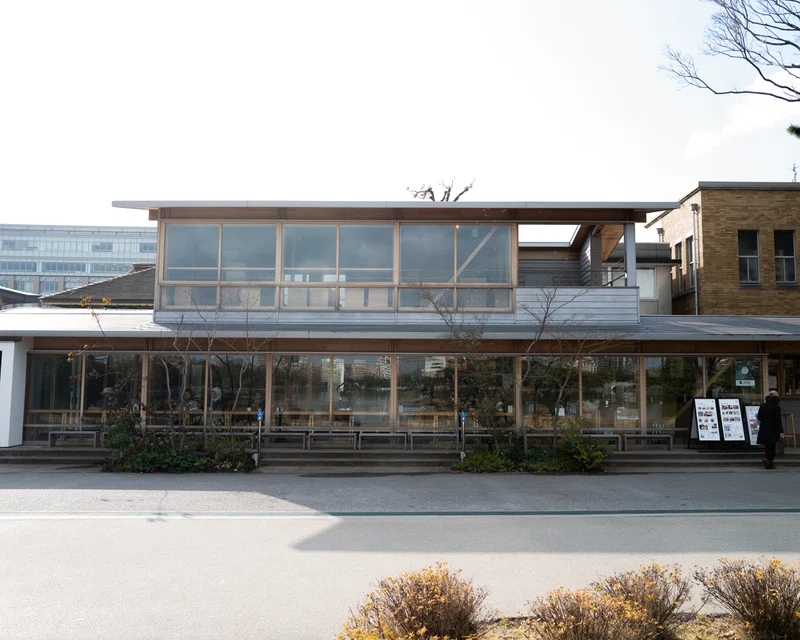
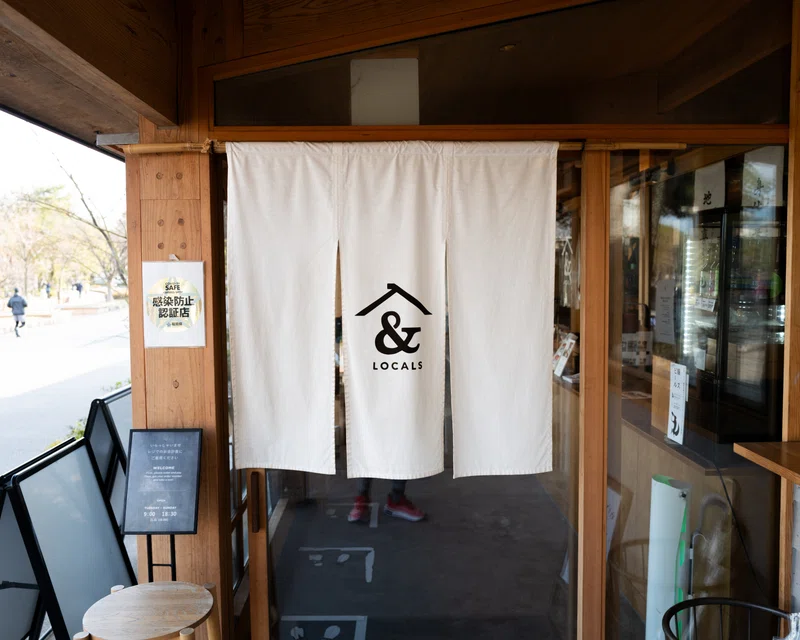

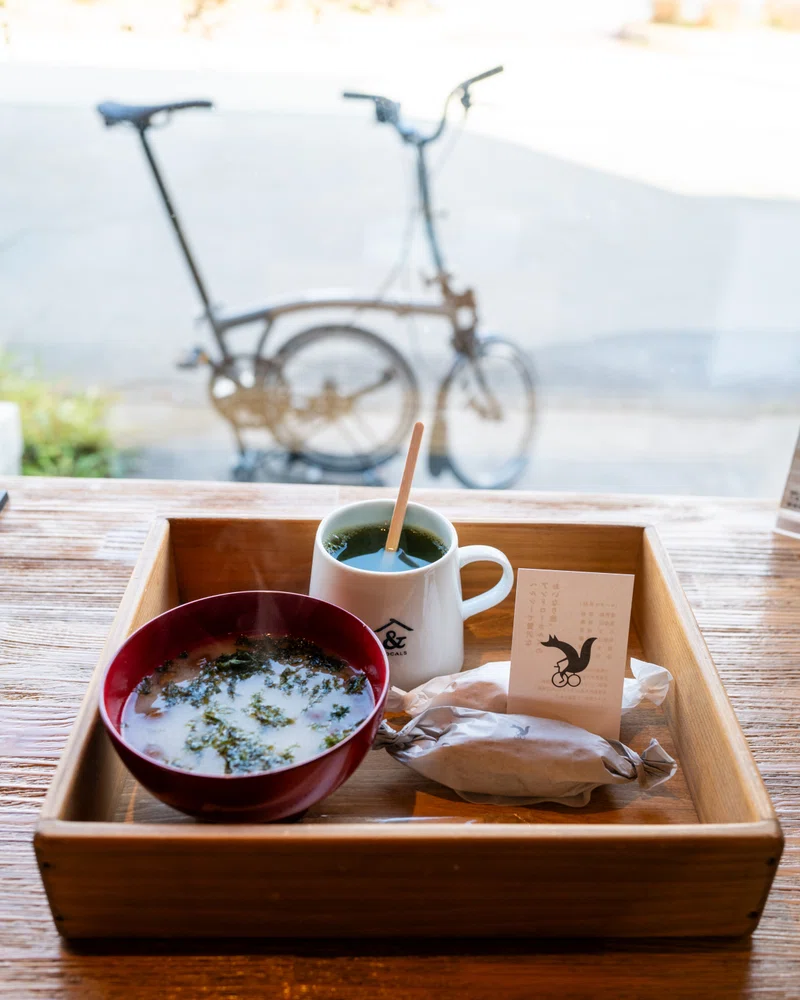
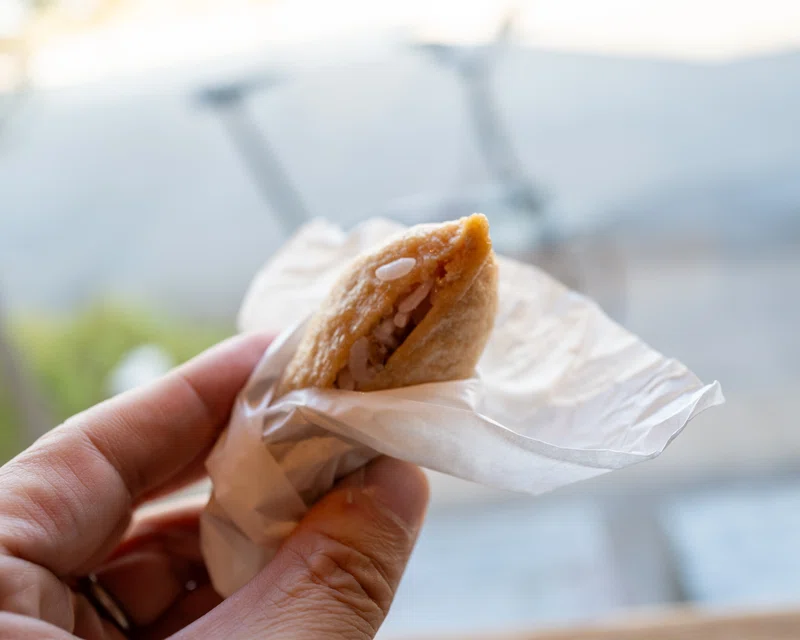
The chewy texture of the barley is delightful. The white sesame is fragrant, and the yuzu pepper has a strong kick. They’re bite-sized, but with the miso soup included, you feel fully satisfied. They also offer a popular set with dashimaki tamago for lunch. Highly recommended!
With my bellies full, the next destination for my city ride is the Genkoborui, an ancient defensive wall that sprawls across the Nishijin district of Fukuoka City. In ancient times, this wall was built for several kilometers to prevent the invasion of Chinggis Khan. I head towards the Nishijin district from Ohori Park.
As I approach the area near Seinan Gakuin University, unfamiliar signs catch my eye.
4. Isono-kun on “Sazae-san Street”
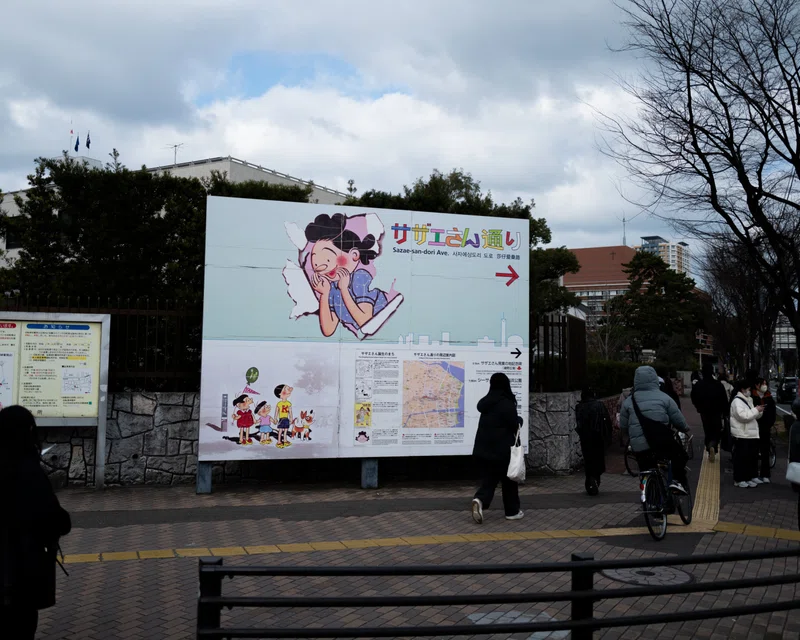
What’s this all about? Curious, I read the explanatory sign nearby, and it turns out there’s a park nearby where Machiko Hasegawa, the creator of Sazae-san (a beloved family manga in Japan), found inspiration. In front of the university library stands a large bronze statue depicting Machiko Hasegawa and Sazae-san side by side.
Since I’m here, might as well snap a photo with the Brompton.
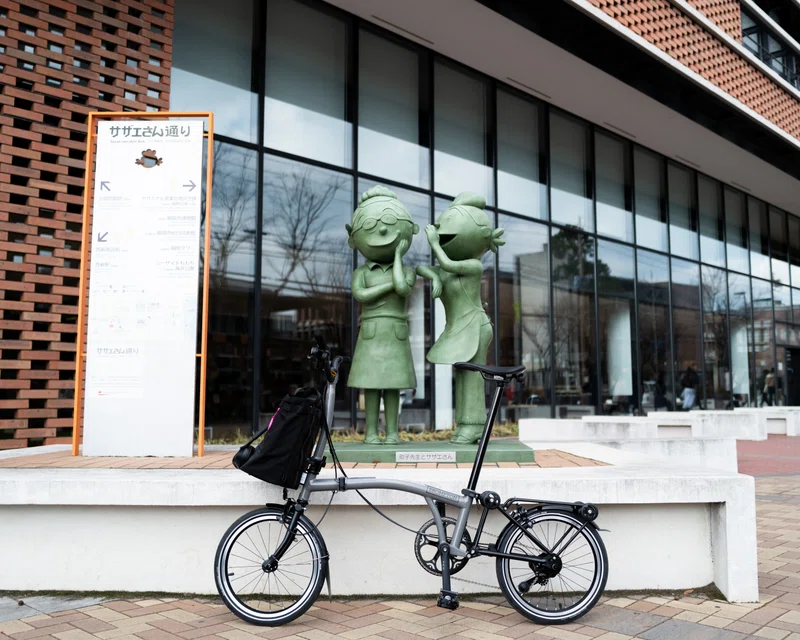
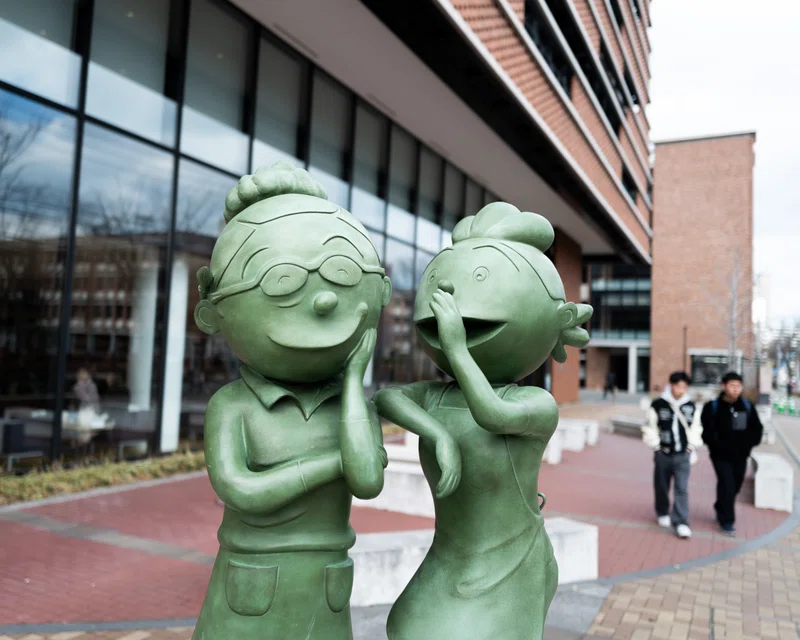
Heading back towards the Genkoborui.
Actually, in this area, the defensive wall stretches for quite a distance, and traces of it can be found all over. The section of the defensive wall I visited was nestled within a pine forest. Next to it was the Genkou Shrine. Last year, when I visited Tsushima, I went to Komoda Beach, known for being a fierce battleground during the Mongol invasions. Reflecting on the immense impact these invasions had on the people of that time, I felt a deep sense of history. If you are a history enthusiast, I highly recommend exploring these sites.
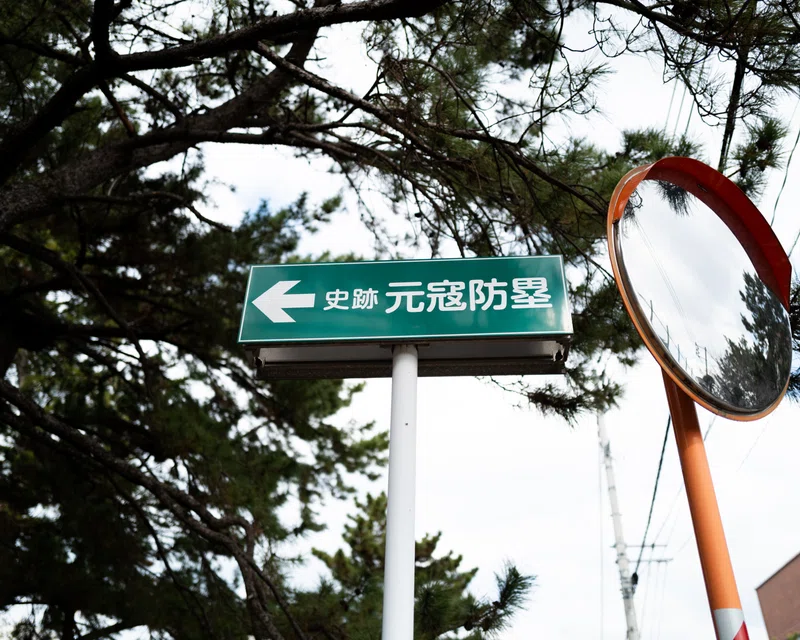
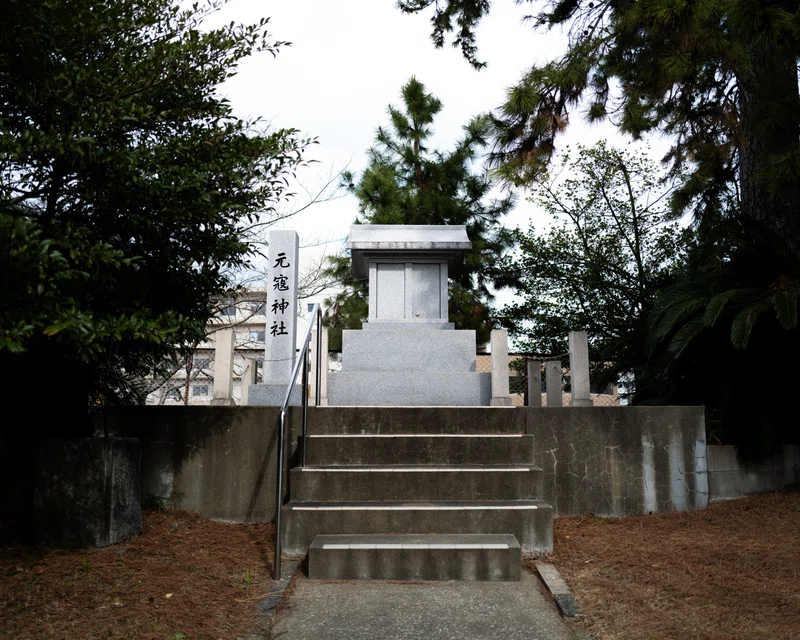
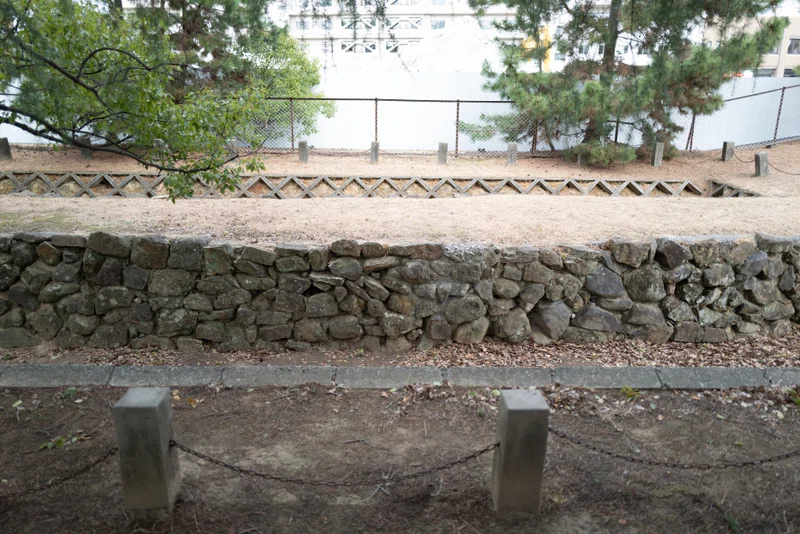
I head towards the sea from there, to a place called Momochi Beach. Along the way, there are more monuments related to Sazae-san. I see a young man taking photos. Unexpectedly, he asks if I could take his picture. “Of course!” I reply. As I’m considering the best angle, the young man suddenly says,
“I’m Isono (the same surname as the Sazae-san family).”
“Whaaaat, Isono-kun!”
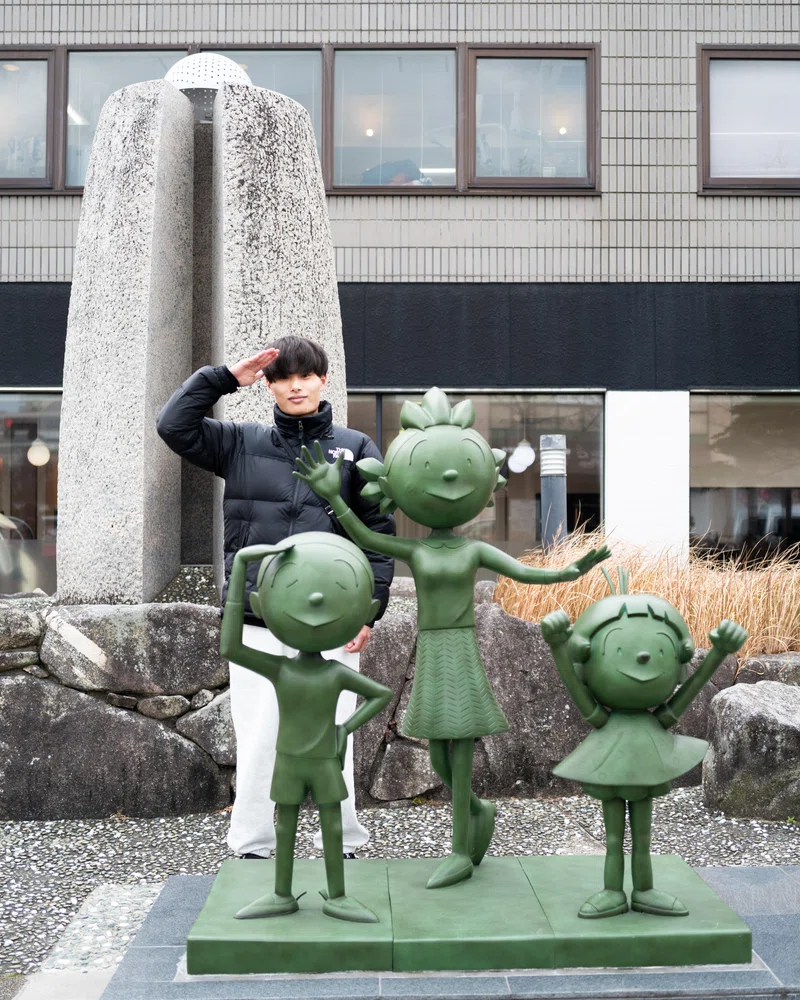
I heard that he came to Fukuoka to have fun, but when he learned about Sazae-san Street, he couldn’t resist coming here.
But seriously, this is an incredible rare experience. Just happened to be passing by Sazae-san Street, just happened to run into Isono-kun who happened to be there, and then he approached me and introduced himself. It all came together for the first time.
Such miracles happen, that’s the fun of traveling by bike.
5. Bicycle-Friendly Fukuoka
The streets of Fukuoka are very cyclist-friendly. Many roads are equipped with signs indicating designated lanes for bicycles along the edge of the roadway. Drivers are also considerate towards cyclists. Unlike Tokyo, the wide roads are also a plus.
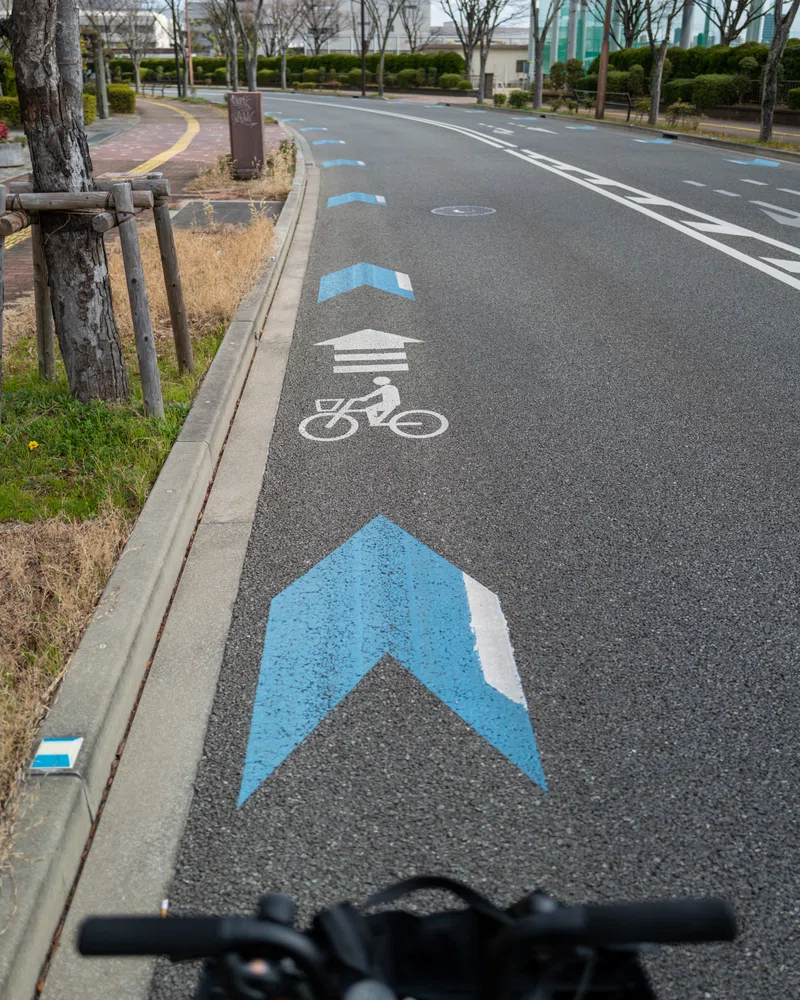
Momochi, was a major setting in the novel “From the Fatherland, with Love” by Ryu Murakami. It’s a highly engaging novel, spanning two volumes, and I personally consider it to be the pinnacle of Murakami’s work in a sense. The descriptions are incredibly realistic, thanks to meticulous research.
In the novel, North Korea sends special forces to invade Japan, and Momochi is where they land from the sea. The soldiers set up their headquarters at the Seahawk Hotel. Battles with Japanese forces take place, with PayPay Dome (formerly Fukuoka Dome) and the National Hospital Organization Kyushu Medical Center also serving as stages.
Reflecting on such things, I continue pedaling forward.

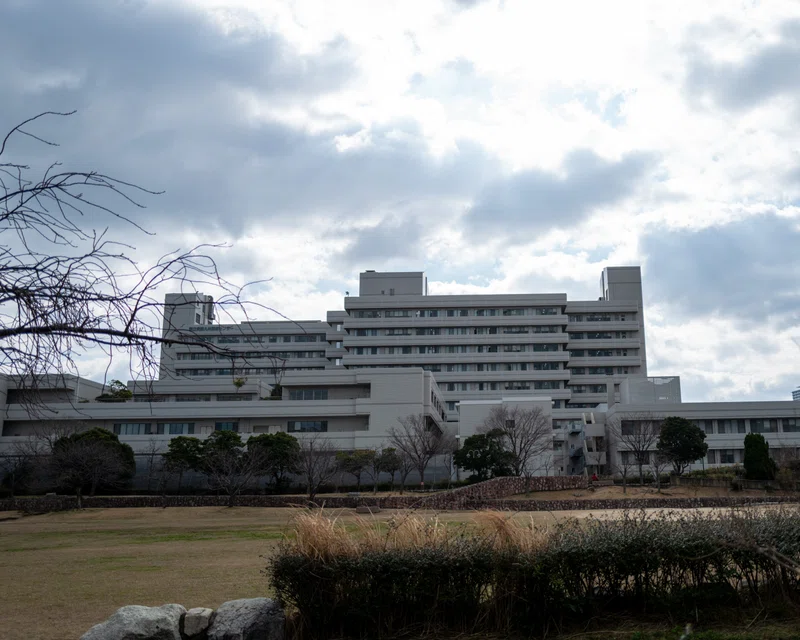
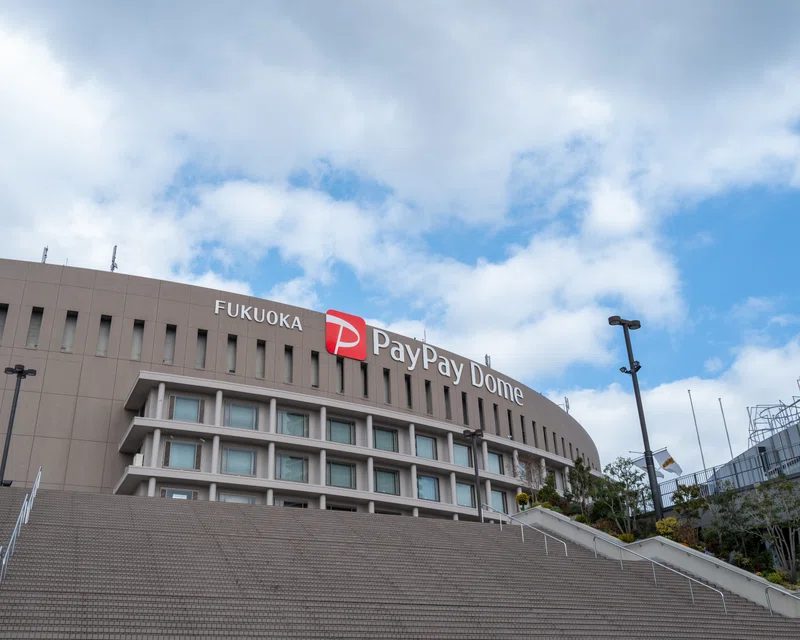
After passing through Momochi, I head east again.
The destination is Hakata Port Tower. It’s that structure visible from Fukuoka’s urban expressway. I’ve always wanted to go up there. True to its name, the Port Tower stands at the gateway to Hakata Port, the entrance to the sea of Hakata. The large ferry “New Camellia,” which connects Hakata and Busan, South Korea, in 6 hours, was moored there.
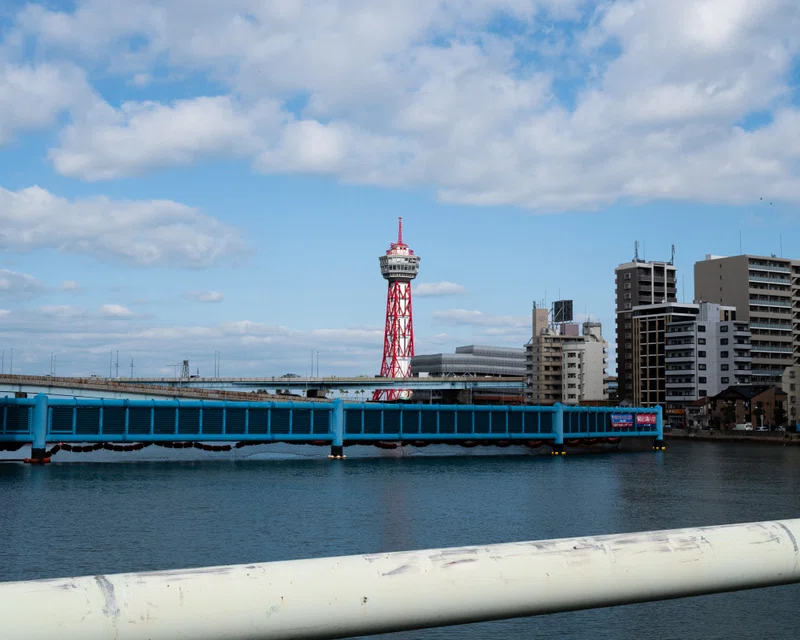

Hakata Port Tower is surprisingly not well-known, but admission is free. Taking the elevator to the observation deck, you can enjoy a panoramic view of Hakata Port and the city of Hakata.
The architect behind it was Tachu Naito, who was active in the post-war period. Naito, also known as “Tower Doctor,” was responsible for designing famous towers such as Tokyo Tower, Tsutenkaku, TV towers in Nagoya and Sapporo, and Beppu Tower. Hakata Port Tower is said to be the “youngest sibling” among the “Tower Brothers.”
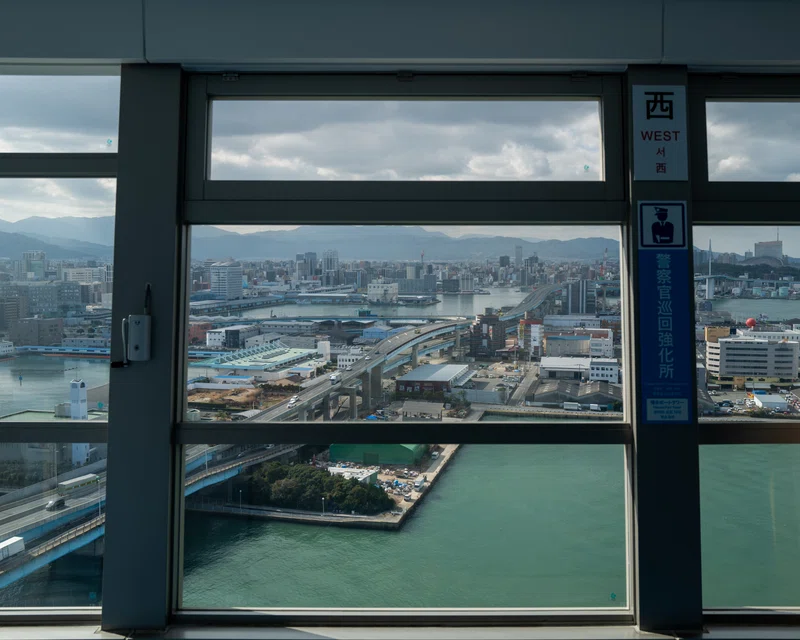
Upon returning to the city, I headed to Sumiyoshi Shrine. It’s said to be the oldest Sumiyoshi Shrine in the country. Perhaps because it’s close to Fukuoka’s bustling downtown area, there were many inbound tourists. Since it’s considered a power spot, I decided to draw a fortune slip, and it turned out to be a moderately good fortune.
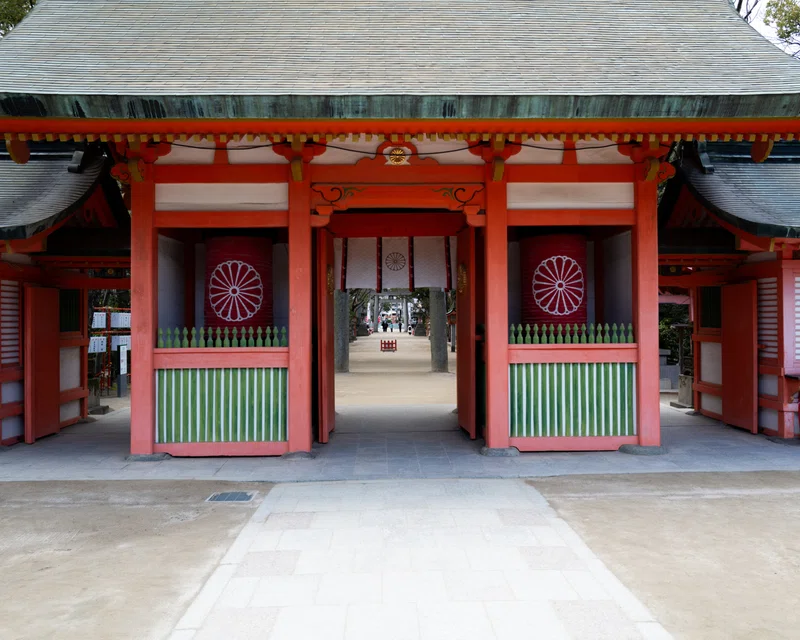
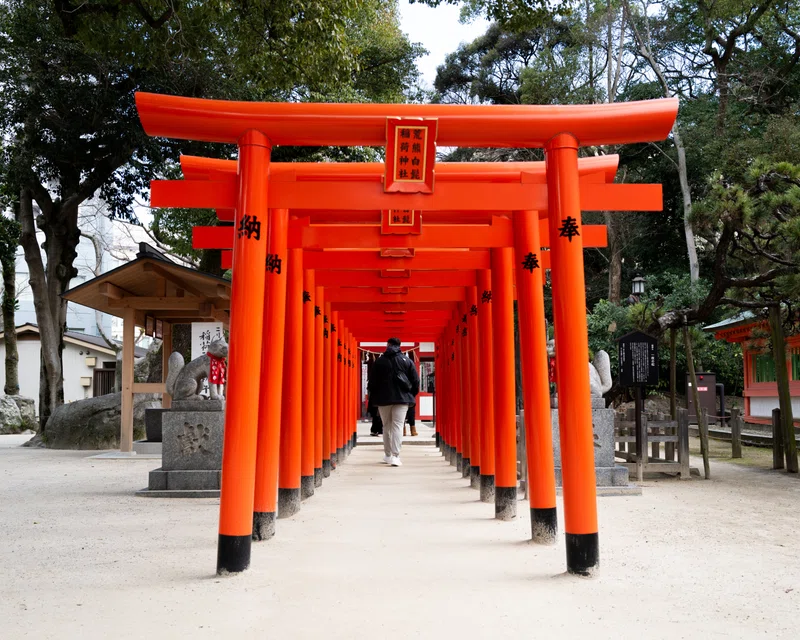
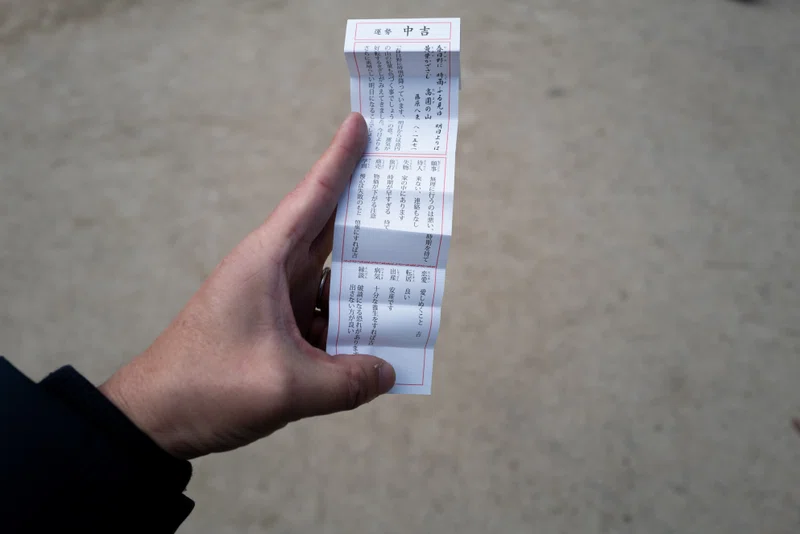
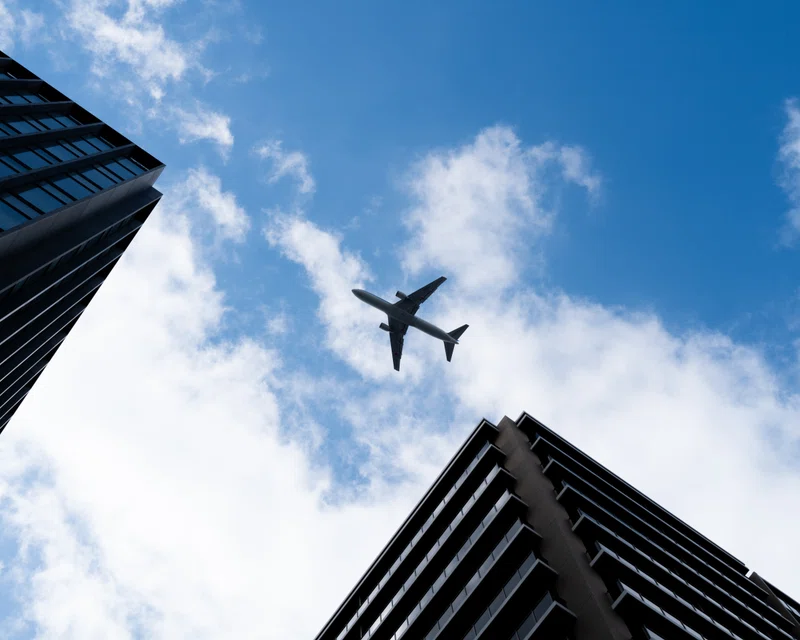
6. To Hakata’s Famous Shop “Udon Taira”
It was just before 2:00 PM.
I headed to my final destination, “Udon Taira”. It’s always a crowded restaurant with long lines. However, perhaps because it was late in the day, I was able to enter without queuing despite it being a holiday. According to online information, it seems that Tamori-san, a famous Japanese TV personality, has visited this restaurant.
I folded my Brompton in front of the restaurant and passed through the curtain. The staff quickly noticed and gestured towards a space by the wall, saying “Please leave your belongings here.” Before taking my seat, I quickly placed my Brompton there. It was so adorable that I couldn’t help but take a photo. It was just like a perfectly curled-up cat.
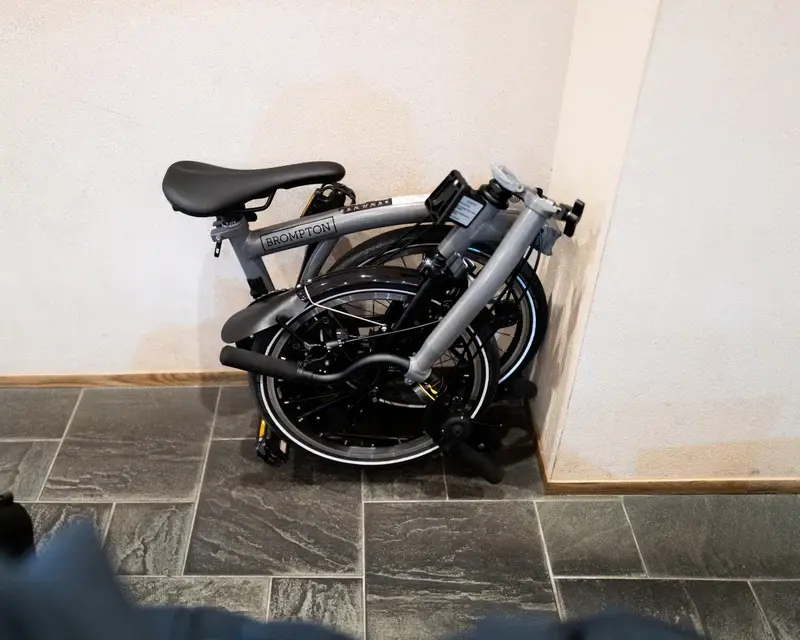
What I had was the most popular dish, the “Niku Gobo Udon”. Crispy gobo tempura, savory-sweet beef, with plenty of yuzu pepper added, slurping the udon noodles. Tamori-san famously said that “udon is a drink”, but the udon and broth blend seamlessly, soaking into the body.

7. Travel Rides are the Best!
There are many noteworthy architectural sights in Hakata. One of them is Acros Fukuoka, facing Tenjin Central Park. Here, through full-scale greening, it appears as if there is a lush mountain right in the middle of the city. On this day, an event was taking place, and the area was bustling with a large crowd.

On the way back to the hotel, I stopped by Kushida Shrine to see the decorated floats used in the Hakata Gion Yamakasa festival. The festival takes place every July, but at this shrine, you can see the actual decorated floats used in the festival throughout the year. These floats have been made by Hakata doll artisans since ancient times. Even though they are the same decorations, they get smaller as they go up. This creates an illusion that they appear larger than they actually are.
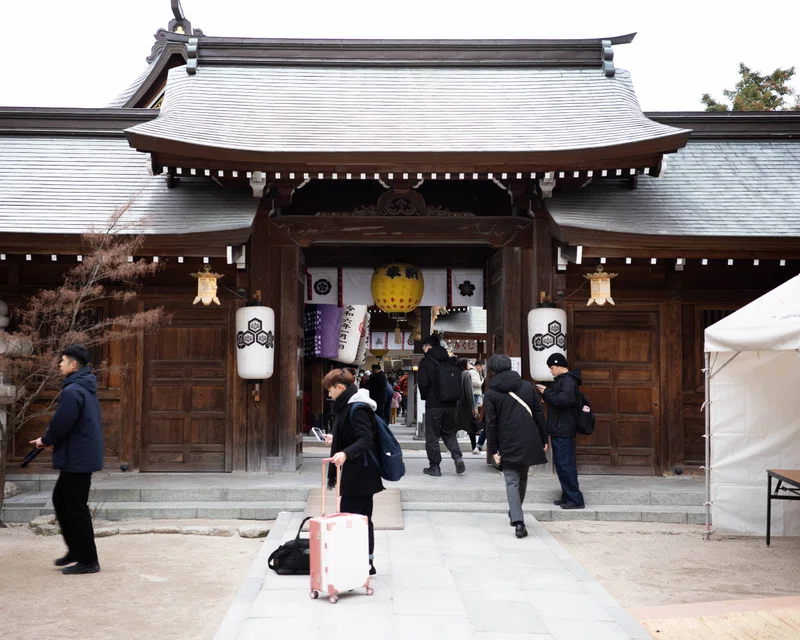
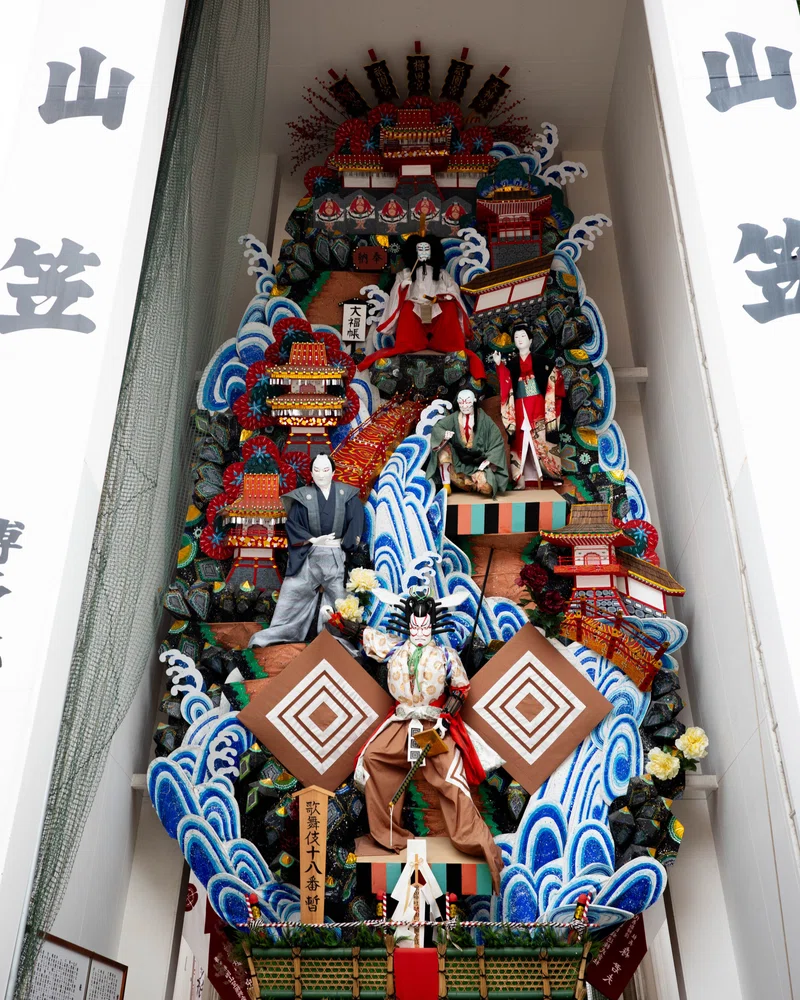
This ride covered approximately 30 kilometers. If you were to ride non-stop on a road bike, you could cover this distance in just over an hour. However, for this leisurely trip, it took about 6 hours. Whenever I encountered a picturesque scene that captured my heart, I would stop to take a photo, and if there was a place of interest, I would make a detour. This kind of ride, possible with a compact bike like the Brompton, allows you to fully enjoy the journey.
To truly savor a city, there’s nothing quite like exploring it by bike on a “travel ride”.
🚲Related articles
Circle of Cycling Friends Ring-tomo! #01 Daisaku Kawase
TV Producer Daisaku Kawase’s Ride Note Okinawa Edition #01
TV Producer Daisaku Kawase’s Ride Note Okinawa Edition #02
Riding through the sky. The mystical Aso ride.
Profile
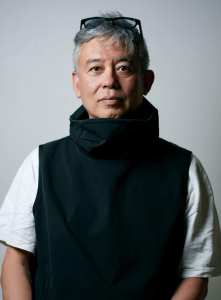
Daisaku Kawase
He is a Free Producer, the Representative of Days Co., Ltd. Born in Aichi Prefecture. With 16 years of road cycling experience, he loves scenic rides. He squeezes in rides between work and travels all over Japan with his bike. His beloved bike is a Trek. After working as a producer on programs like “Ariyoshi no Okane Hakken Totsugeki! Kaneo-kun,” “Oyasumi Japan Nemuiine,” and “Asaichi” at NHK, he became independent in 2022. In addition to producing programs, he also handles project production for government and corporate clients.
Post Date:2024.05.31

